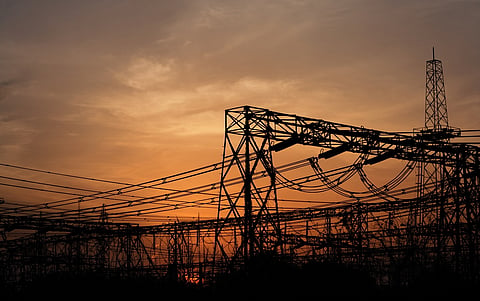

India must overhaul its power transmission framework to keep pace with the country’s ambitious target of 500 gigawatt (GW) non-fossil fuel capacity by 2030, according to a new report.
The industry paper on India’s transmission sector, released by the Confederation of Indian Industry (CII) warns that bottlenecks in grid expansion, regulatory overlaps, and financing challenges could undermine the nation’s clean energy transition if left unaddressed.
This comes at a time when delays in the commissioning of critical transmission infrastructure and congestion in existing lines were undermining the viability of renewable energy projects in several states, including Rajasthan.
The report stresses the urgent need to strengthen grid reliability, standardise technical specifications, and streamline approvals. It highlights how fragmented processes and outdated policies are delaying projects at a time when renewable integration requires fast, large-scale upgrades.
“Without timely reforms, India risks transmission becoming the weakest link in its energy transition,” Sterlite Power CEO Arun Sharma cautioned. “The next five years will decide whether we can truly scale up renewable power while maintaining grid stability.”
According to the Union Ministry of Power, India’s transmission network stood at about 480,000 circuit km as of October 2024. To accommodate rising renewable generation, the country plans to expand to 650,000 circuit km by FY32, with 114,000 circuit km to be added by 2027.
CII points out that uneven distribution of energy resources poses a major challenge—solar and wind are concentrated in Rajasthan, Gujarat, Tamil Nadu, and Karnataka, while demand centres lie in central and northern India. This makes a resilient, high-capacity grid indispensable.
The report’s standout recommendations include:
Standardisation of grid infrastructure: Align state procurement with Central Electricity Authority norms to reduce inefficiencies and lower costs.
Dedicated reconductoring plan: Upgrade existing lines with high-capacity conductors instead of only building new ones.
Automation & AI integration: Mandate AI/ML in new lines and retrofit old ones to optimise power flows.
Financial reforms: Replace costly bank guarantees with insurance surety bonds and allow pass-through of Right of Way (RoW) cost overruns.
Regulatory clarity: Simplify overlapping approvals under Sections 68 and 164 of the Electricity Act to eliminate delays.
Bottlenecks in renewable integration
The paper underscores that large-scale integration of solar and wind will strain the grid unless supported by automation, battery storage, and smart load balancing. Industry leaders flagged the lack of robust RoW frameworks and inconsistent state-level standards as critical roadblocks.
“India has set a clear direction for decarbonisation. But unless we modernise the transmission backbone, renewable energy will get stranded at generation sites,” said Kandarp Patel, CEO of Adani Transmission.
CII has urged the government to create high-intensity transmission corridors using advanced conductors, streamline forest and land approvals, and establish a dedicated RoW compensation framework under the Electricity Act. The report also calls for relaxing import restrictions on critical HVDC equipment while accelerating domestic manufacturing.
The recommendations extend to workforce development, with proposals for vocational institutes to partner with the Power Sector Skill Council to fill technical manpower gaps.
India’s transmission sector has already seen an addition of nearly 195,000 circuit km since FY15. But annual additions have slowed in recent years, with just 14,203 circuit km added in FY24 and a sharp dip to 391 circuit km in FY25 (till April 11, 2025).
Industry leaders warn that this pace is inadequate.
“Transmission must not remain the laggard in India’s clean energy story,” said Rajiv Ranjan Mishra, managing director of Apraava Energy. “We need bold decisions now—on standards, financing, and clearances—to unlock investment and deliver reliable power to every corner of the country.”
The report highlights that India’s clean energy ambitions hinge not only on ramping up renewable capacity but also on building a future-ready, automated, and financially viable transmission network. As the country races toward its 2030 targets, the call from industry is clear: strengthen the wires that bind the energy system, or risk bottling up the very clean power that India is counting on.